Redarc Tow-Pro Elite Brake Controller w/ Custom Harness - Dash Knob - Off-Road Mode - Up to 3 Axles

 Arrives before Christmas
Arrives before Christmas 

with factory 4-Flat
with factory 7-Way
Will this fit?
To see if this custom-fit item will work for you please tell us what vehicle you'll use it with.
- All Info
- Reviews (1672)
- Q & A (0)
- Videos (8)
- Photos
Redarc Trailer Brake Controller - RED55CR
- Electric
- Electric over Hydraulic
- Proportional Controller
- Up to 3 Axles
- Redarc
- Behind-Dash
- Plug-In
- Dash-Mounted Knob
- Single Trailer Only
- Indicator Lights
This is one of our favorite brake controllers, with flawless braking and a tiny dash knob that looks like it came straight from the factory. Its unique off-roading mode helps you handle rough conditions, so get out there and get towing.
Features:
- Proportional - Smooth, safe, and good for your brakes long-term
- Off-road mode - A unique feature that gives you direct control of your trailer's brakes
- Sleek (tiny!) knob blends into your dash - The main unit mounts out of sight behind the dashboard
- Simple controls - Use the knob to adjust the settings, activate manual override, and troubleshoot
- Safe - Meets or exceeds both UNECE R21 and FMVSS 201 regulations for sustainability and safety
- Plug-and-play - Vehicle-specific harness included
- Made in Australia - If it can take the Outback, it can take anything, mate
Specs:
- Application: trailers with 1 to 3 axles (6 brake assemblies)
- Compatible with electric or electric-over-hydraulic trailer brakes
- Works with 12-volt and 24-volt vehicle electrical systems
- Main unit dimensions: 4" long x 3-3/8" wide x 1-1/8" tall
- Control knob dimensions: 1-7/8" long x 9/16" wide x 3/4" tall
- Length without knob: 1-1/4"
- Output voltage range: 9V - 32V
- Output current rating: 25 amps continuous
- Maximum charging voltage: 12V DC
- 2-Year warranty
Off-Road Mode
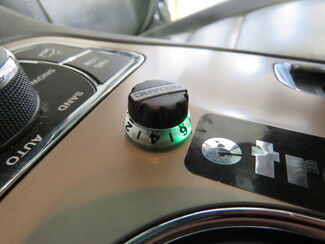
The off-road mode is a unique feature of the Redarc Tow-Pro Elite. In this mode, the brake controller will apply your trailer's brakes with a preset amount of power, independent of what your tow vehicle is doing. This is ideal for off-roading or challenging conditions. Set the power low if you're towing through sand or mud so that the trailer doesn't stop with too much force and act as an anchor. If navigating a steep descent, set the power to a higher level to ensure that the trailer doesn't push against the tow vehicle.
To activate the off-road mode, rotate the knob counterclockwise and apply your vehicle's brakes. Push down on the knob twice (2 times within 1 second) and release the brakes. The knob will turn green to let you know that the mode has been activated.

How to Use Redarc Tow-Pro Elite
Use the knob to set the braking output -- the maximum amount of power that will be applied to your trailer's brakes. To get more power output, rotate the knob clockwise toward 10. To decrease the power output, rotate it counterclockwise toward 0.
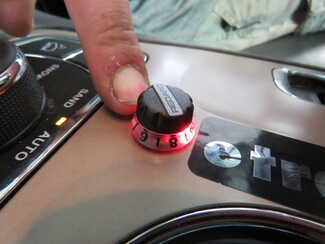
When you apply the tow vehicle's brakes, the knob will change from blue to red to signal that the trailer brakes are being activated. The higher the braking power output, the deeper the red that you will see.
Manual Override
To engage manual override, simply press the control knob. This will activate the trailer's brakes and brake lights independent of your tow vehicle, great for stopping sway or controlling your trailer's momentum in an emergency.
How to Calibrate Redarc Tow-Pro Elite
When you are calibrating the brake controller for the first time, the LED lights will signal your progress.
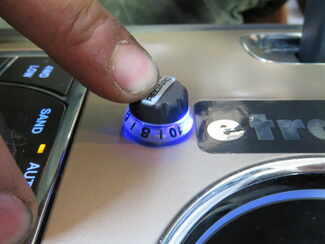
You'll start by braking 20 times or so to let the unit learn its orientation and the direction of travel. You don't need to have a trailer connected for it to calibrate; the only difference is that the knob won't illuminate at all. If your trailer is connected, the LED light will flash green/blue as it calibrates. When the display turns solid blue, initial calibration is complete.
Once done, the unit will remain calibrated. If recalibration is required, it will happen automatically and without LED indication.
How to Install Redarc Tow-Pro Elite
The Tow-Pro Elite has almost no mounting restrictions. It comes in 2 pieces: the main unit and the control knob. The main unit can be mounted out of sight and out of the way. You don't have to worry about dinging your knee on a bulky brake controller or interfering with your vehicle's airbags.
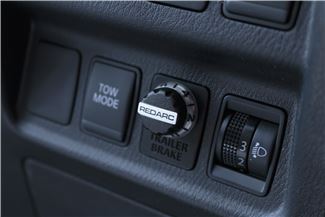
The control knob can be installed in any convenient spot that's easy for you to see and access. This can be a blank switch panel, an open spot on your center console, or wherever there's space on your dashboard. A universal mounting panel is included to ensure a clean, from-the-factory look. Custom-fit panels are available for certain vehicles as well. Before you do any drilling, be sure there's enough clearance behind the dash for the entire knob to install!
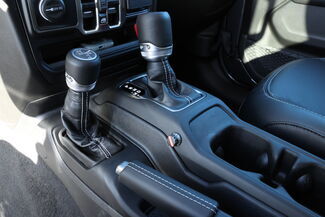
Once you've decided where you want to put the control knob, you'll need to find a good place to install the main unit. Your only restriction is the 3' cable connecting the main unit and the control knob. Securely mount the box using screws, double-sided tape, or zip-ties (not included). A mounting kit (RE67FR - sold separately) is also available for the Tow-Pro Elite. Do not attach the module to wiring or cables that can shift as you drive!

Then plug the custom-fit harness right into your vehicle and the brake controller and you're done!
If you don't already have a 7-way plug at the back of your vehicle, take a look at our exclusive 7- and 4-way brake-control installation kit (ETBC7 - sold separately). A 30-amp circuit breaker kit (331-CBK30-EB - sold separately) may also be required for installation.
For assistance in properly wiring the Tow-Pro Elite, please refer to the diagrams below:
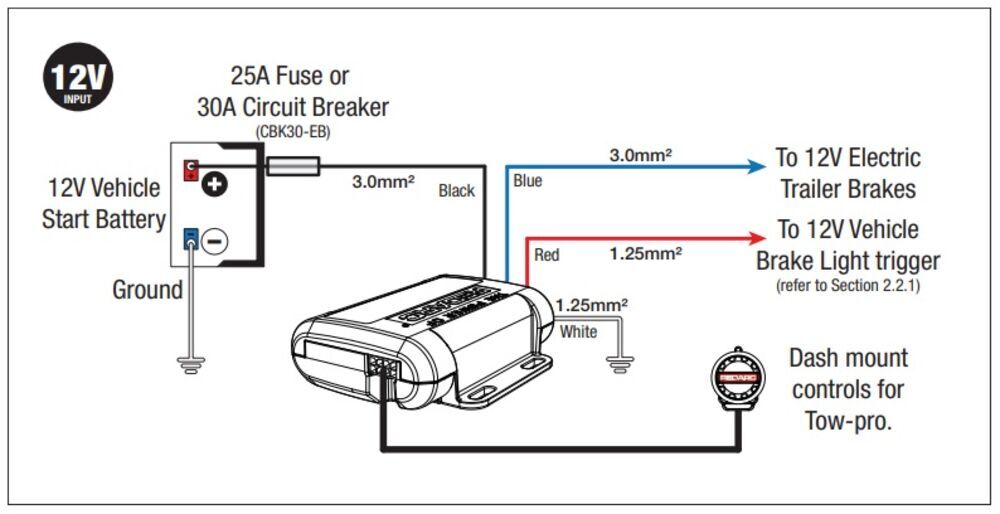
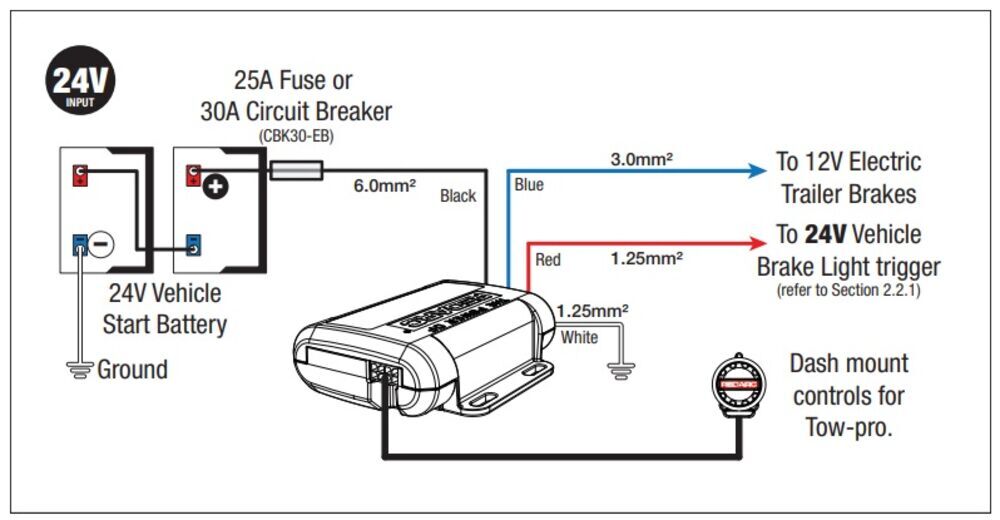
What is Proportional Braking?
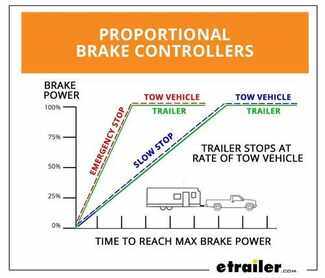
Proportional braking means that your trailer brakes mimic your tow vehicle's brakes. If you slam on the brakes in your vehicle, your trailer brakes will activate with the same intensity; if you brake lightly, your trailer brakes lightly too. The trailer's braking is in proportion to your vehicle's braking. This saves wear and tear on the tires and the brakes on both your vehicle and trailer.
The Tow-Pro Elite uses an internal 3-axis accelerometer to sense how your vehicle is braking so it can send the right amount of braking power to your trailer. It measures the inertia of your tow vehicle and activates the trailer's brakes to slow at the same rate. The result is uniform braking across your towing setup. No push-pull action - just smooth, proportional braking every time.
EBRH-ACCV3 Redarc Tow-Pro Elite Trailer Brake Controller - Dash Mounted Knob - Hidden - Proportional Brake Controller
Replaces Redarc 331-EBRH-ACCV2
TPH-007 Redarc Wiring Harness for Tow Pro Electric Brake Controllers - Plug and Play
Installation DetailsCalifornia residents: click here

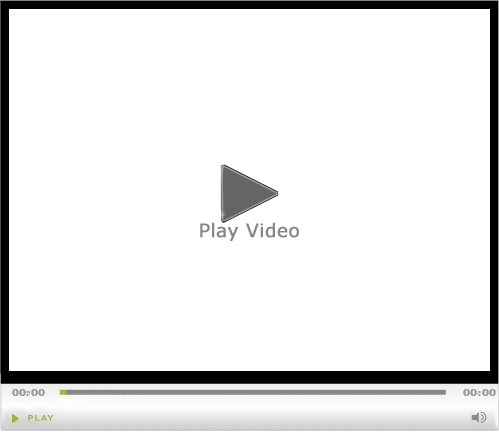
Videos are provided as a guide only. Refer to manufacturer installation instructions and specs for complete information.
Video Transcript for Redarc Tow-Pro Trailer Brake Controller Plug-and-Play Wiring Harness Install - 2022 Ford F-250 Super
Ola neighbors, It's Brad here at etrailer, and today we're taking a look at the vehicle specific wiring harness piggyback for the Redarc Tow-Pro Elite, on a 2022 Ford F-250. Having vehicles specific harness is going to allow you to plug in directly to your factory tow plug on your vehicle. And this does come with the kit and you can splice this in, but I'm a big fan of the plug and play aspect of having a vehicle specific harness, and that way you know it's gonna be hooked up correctly and you're not having to go back and troubleshoot. As opposed to our included harness, the vehicle specific one actually has a very nice OEM plug and a nice sheathing that goes around it, and that's gonna protect these wires from any chafing that might make contact in the dash. Now, I'm gonna show you how that harness makes this installation nice and easy. The first part of the installation is really planning it out how you want it to look and how it's going to sit on your dash, so, here we have the trailer brake kinda spacer here, and that's gonna be nice, it gives it a good look on the knob.
Now, so, if we use this, we can find a bunch of different spots, this cubby is actually I think a great spot because you do have the factory tow wiring right behind this, and it's plugged into a plastic part of that cubby just for safekeeping, so, I think this will probably be our option. It's a little more evasive than running it on some other spots on the plastic, but it's kind of at a good spot to adjust and also do your manual override. So, I think we're gonna go with this spot, and the next step is gonna be just getting this open, so let's kinda dive into that. Before I do install it in our cubby, again, you can run this wherever you want on your plastics assuming there's nothing back there and you have clearance, so you will have to drill a hole wherever you put it. So, just remember that when doing the install, so, also something important to note, you know, if you chose to put it down here or on any of the plastics, you need to know what's behind it.
So, part of the planning kinda happens, you know it's gonna go here, you can pull this plastic off, that's great, but if you're gonna wanna put it in the cubby or any other spot, make sure you pull that panel off and know that there's clearance for it. There's also the module that it has to attach to, so finding space for it is another thing you need to plan out. So our customer requested that we install it in this cubby hole, so we're gonna go ahead with that. And in order to do this, this panel is gonna be sandwiched in between underneath our steering wheel, there's some plastic here, and then you also have your center console where you have your radiator display, so this will have to come off. And so to begin that, there's this bottom shroud here and there is a seven millimeter bolt here, we're just gonna remove that.
This bottom shroud comes off, there are some plastic clips, and so just kinda be careful with it. I've kind of worked my self from outside in, so this side's kind of pried out, I can go on my passenger side, start popping that and it should pop out. I pulled it from this back side here and you can see it kinda pops, and then there's one more clip here it seems, we let it go, and now you can set this plastics aside for later assembly. So the garnish here that we're pulling out it actually kind of hooks into the center console where the radio is, and so we're gonna need to pry this forward in order to kinda take it out. We'll be starting to do that by pulling this little dust cover out, and you're gonna see there's two seven millimeters bolts there and we're gonna go ahead and remove those as well, and you can put those with the other hardware that we removed already.
I'm gonna try to remove this center storage little cubby up top, and as I pry it open with my plastic trim tool removal, I'm going to see these white clips and I should be able to just push those in and pry this up, and there we go. Now, simply I just pushed up, push down on these clips, and that allows me to pop this up. You can set your top tray kind of aside, and you're gonna see there are two more seven millimeters that we're gonna need to remove. So with those two screws out, we can now kind of just pry up and very carefully press forward, there we go. So now with that gap, we're able to get this panel out a little bit easier. So going back with my plastic removal tool, try to get in here and just start prying, and don't go too hard on one section because if you start prying, it can cause stress marks in the plastic, so take your time and work your way around the entire bezel here. As I kinda pull this forward and move this to the side, I can get those out of those channels and that's really gonna help me move this out. Now you do have your selector for your four-wheel drive, so you're not gonna wanna pull this too hard because it's attached to the plug. You're just gonna work your way down here and then pry up, and there we go. Like I said, there's our plug here for our four-wheel drive and we're gonna remove this by just pushing that tab down, that slides out. Now keep this here if you need to tape it or whatever that way it doesn't fall back in the dash, and it's gonna be a good reminder when you put it back together to plug that back in. So now, we have access to our cubby, it's no longer sandwiched between the plastic, so, with our removal tool we're gonna just pry that and that comes out. And here is the existing plug for your tow package, as you can see, it's not actually plugged into anything except for this plastic holder, so we'll go ahead, push our tab in, and remove this. So now that we have everything opened up, we're really gonna want to plan our attack as far as mounting everything up. And so this box does need to be mounted to something that's gonna be stable, so you don't wanna put it on any wire looms or anything like that, and that way it's not moving around. So luckily, as looking at the top above the radio here, you're gonna see these two studs, and just kinda mocking it up here, those studs fit pretty well into the holes. So I'll then going to enlarge those with a drill bit, slide that on, and then we'll wrap some zip ties on the bottom, and I might even throw some hook and loop or double-sided tape on the back just for added security, I don't want that rattling loose. Now, you can see here, this will plug directly into our factory tow harness here, and then this is gonna route up into the box. So we'll kind of dry fit it here just to kinda get an idea of how we need to route it. And then also continuing on, you're gonna see this adapter as well, which this is gonna go into the box, and then the other plug is going to go into our control switch. So, we know that this has to fit into our cubby, so we're able to route this wire out as long as we can reach to the module. So now that we have it hooked up, let's, I'm gonna drill the holes out on this, mount it up, and try to get these wires tucked in really nice. I'm simply gonna enlarge the holes on this actual module and that way it can slip over these, the existing studs. Now I recommend before actually mounting the bracket to have your plugs in place, so you have your top one here and then also the smaller black connector, and that way you're not trying to connect it while it's down there. So once you slide that over the studs and kinda zip tie that in place, then you can start routing your wires towards the controller itself, and I can see this little notch here, so I actually zip tied it there and ran it over the HVAC duct here. You see I wrapped it over and it's actually kinda, this is very pliable, so you can kind of move that to get your hand in there to gain some access to make it pretty easy, and then from there, you just route it to the cubby hole. So right now I have my existing harness, our piggyback adapter, as well as the plug that's going to go to the turn knob. Also important is when you're mounting your bracket is to check the clearances to make sure that this is still gonna close down. You don't want to mount that down and then realize that this isn't going to go into place. So, come there, it looks like it's going to sit flush so we're looking good. So now we're going to take our piggyback harness, attach it to the factory tow package plug, and I'm gonna simply just place this back here for now. I'm going to go back later and zip tie this so it's a little more secure just for my own personal wellbeing there. Now, you do have this plug that's gonna go to our connecting on our turn knob here, so we are gonna have to drill a hole in the cubby pocket, and I think if I put a half inch drill bit into where the plug holder was, I think that I'll be able to run that through with no problems, so, we can go ahead and get a hole here, and then we can kina see how it looks. So with the half inch hole drilled, I did waller it out just a little bit and walked the bit a little back and forth, but you can see that plug goes through very nicely. So, now that we have that through, we can kind of get an idea of how this is gonna look, grab our switch and plug this in. So, now with that kind of installed, we can see what it looks like. Now, from the factory, this actually sits in the cubby as like a little grip holder, I'm gonna put that in place 'cause I think that's gonna hold this pretty well. And then we're also gonna add a little hook and loop on this to make sure that that controller doesn't move, 'cause as you're adjusting or doing a manual override, you're gonna notice that when you push it, it actually might move, so little hook and loop should hold that in with conjunction of the rubber piece. So just makes sure this little tail goes through, pull that, and that's gonna sit really nice right in the middle there. And I really like that, and this kind of creates a lip that way when I pushed down, it's actually not moving the plug. So, go ahead and put some hook and loop, or double-sided tape, if you want to make a bracket, that's up to you, but I do think this will hold it in place just fine. So at this point, I have it all plugged in and I wanna make sure that it has power, so I'm gonna give it a quick push, you can see it start to illuminate, and so we are hooked up there. As far as calibration goes on the actual trailer brake itself, we're gonna do that a little but at a later step, but now that I know that this is working and everything's powered up, we can then get our interior put back together, make sure you get your four-wheel drive connector put back in place, and you should be good to go. So we have everything installed, and we have our truck out of the bay, and now we need to calibrate the actual brake controller. So, we have a tester box actually hooked up to our seven pole, you may need to hook up to your trailer for this. So you can see the light ring around the actual controller, it's flashing green and then blue. So what we're doing during the calibration is every time we stop, the module itself is gonna kinda start to learn how it's gonna move with the vehicle, and it's gonna get this set up. So we're gonna be keep, we're gonna keep hitting our brakes until we this to be a solid color. So I'm gonna get up to about 15 miles per hour here, and then I'll hit the brakes. I'm now gonna continue this process, so find a nice open road where there's no traffic that you can perform your calibration test. Now you can see, it is lit up with a solid blue, so we know that we're calibrated. And that was a look at the vehicle specific harness piggyback wiring for the Redarc Tow-Pro Elite on a 2022 Ford F-250..
Ratings & Reviews
4.8
1672 reviews
See what our Experts say about this Redarc Trailer Brake Controller
- Correct Trailer Hitch Receiver for 2022 Ram ProMaster 3500 With Long WheelbaseSince your 2022 Ram ProMaster 3500 has the extended 159" wheelbase you'll need to go with the Draw-Tite Max-Frame Trailer Hitch Receiver # 76050 instead of the Hitch # 75882 you're looking at. Over the years we've found that the 75882 has issues with a driver side bolt cutout and the spare tire release on the extended wheelbase ProMasters which is why that exclusion exists. The 76050 that does fit has a completely different mounting bracket design so the installation isn't a problem....
view full answer... - Brake Controller Recommendation for a 2023 Mazda CX-50 with OEM 7-Way Harness- SEE SOLUTION UPDATE WITH PART # C32FV IN COMMENT SECTION BELOW - I have a brake controller recommendation but at this time it doesn't look like we (or our manufacturers) have any information or at least an adapter harness to fit with the wiring you have under the dashboard on your 2023 Mazda CX-50. I recommend checking out the Redarc Tow-Pro Elite # RED44FR for your application because the only part of the controller that will be visible is the small control knob - this not only gives...
view full answer... - Converting an M105A Military Trailer Air Over Hydraulic to Electric Over Hydraulic Drum BrakesI have the perfect solution for you! The first thing you need to do is swap out your actuator and for that I recommend using the USA made HydraStar Electric Over Hydraulic Actuator for Drum Brakes # HBA-12 because this company makes very reliable equipment and they receive great reviews from our customers. From my information military trailers like your M105A use larger 1/4" brake lines so you should also need the Fitting # HS43-9035 to make this actuator compatible with your trailer brake...
view full answer... - Load Resistors for 2018 Toyota Tundra and 2010 Airstream with LED Lights to Remove ErrorThe load resistors # DI34ZR put out 6 ohms resistance each and you most definitely can install them yourself. I've attached a photo of the correct installation method to assist. They will get warm to the touch but you can absolutely install them on the inside of your RV where the wires come in from the tow vehicle. I wouldn't put anything right up against the fins as that would further reduce cooling and increase heat, but you won't have any issue in the location stated. The 7-Way...
view full answer... - Can the LED on the Redarc Tow-Pro Elite Be Turned OffThe Redarc Tow-Pro Elite Trailer Brake Controller part # RED44FR will go into a sleep mode when there is no trailer connected to the tow vehicle. This sleep mode is displayed by a breathing blue light on the push control. The breathing blue light is simply a gradual fade from bright, to dim, and then off. The sleep mode allows you to retain all of your saved settings. Unfortunately, there is no way to get ride of the breathing blue light unless you unplugged the controller which would...
view full answer... - Recommended 7-Way Connector for a 2025 Toyota Grand Highlander Hey Kyle, congrats on the new SUV! I am a big fan of the Redarc brake controllers for the exact same reason. The Universal Installation Kit for Trailer Brake Controller item # ETBC7 plugs directly into your 4-way connector and requires you to run a brake controller, power, ground, and accessory wire. It's got all the fuses and wiring you need to complete the installation. For this set up you would need the Redarc Tow-Pro Elite Brake Controller item # RED44FR. The Tekonsha OEM Replacement...
view full answer... - Wiring Location For Trailer Brake Controller On a 2021 Buick Enclave With Factory Trailer PackageYour 2021 Buick Enclave has a wiring pigtail and not a connector for wiring a Redarc Tow-Pro Elite Trailer Brake Controller # RED44FR. The 4 wires are located below the OBD2 port behind the side kick plate(see Image). This is where you will be able to attach the included pigtail using the Heat Shrink Butt Connectors # DW05744-5 and # DW05745-5. You will only need 2 of each connectors for the 4 wires that connect to the brake controller pigtail.
view full answer... - Towing Setup with Brake Controller, Mirrors and Weight Distribution for 2015 Nissan Frontier Hey Brad! Appreciate you reaching out. Looks like you’ve got an awesome setup with the Frontier and that trailer low miles too, that’s sweet! I’d recommend the Redarc Tow-Pro Elite part # RED44FR for your brake controller — it’s super clean because it's just a little knob on your dash and works awesome for normal towing or even rougher roads. You’ll also need the plug-in adapter part # 3050-P to make it plug straight into your truck’s tow package without splicing anything. For weight...
view full answer... - Brake Controller Installation in 2019 Ford RangerWe have not yet (as of April 2019) had a chance to install any wired trailer brake controllers on a 2019 Ford Ranger so for guidance I checked with my most trusted brake controller expert at Tekonsha. Based on what I could learn about the truck if the Ranger has a factory-installed 7-way it should have a standard brake controller connection port above and to the left of your left knee when seated; this will be near the kick panel. You will want to look for a connector that matches the...
view full answer... - Troubleshooting No Power To Trailer Brakes with Redarc Tow-Pro Brake ControllerThe best way to test your Redarc Tow-Pro Elite # RED44FR or Liberty # RED52VR brake controller is by cutting the blue wire coming out of it about 6" away from the controller and using a circuit tester to make sure power is coming out of the controller and going towards your trailer brakes. Try using your manual override by pushing the button to send power on that blue wire and you can verify this function. If you do get power coming out of the controller then you have an issue with the...
view full answer... - Installing Redarc Tow-Pro Elite in 2018 Toyota 4Runner Using Tekonsha Wiring HarnessFor the Redarc Tow-Pro Elite Trailer Brake Controller # RED44FR is an easy installation with the Tekonsha Wiring Harness # 3041-P. You will just use the white connector of the harness along with the wire length and cut off the other end of the connector in order to use butt connectors provided with the Redarc system and it's harness. It is simply color matching and securing the ground to a metal screw utilizing the eyelet. You can see this installation in the attached video and you will...
view full answer... - Brakes Needed for an Older Jayco Pop Up Turned Tear CamperI do have some options for you but you will need to confirm the axle capacity or bearings and seal that your axle uses before choosing a kit. If you have 2K axles (which seems likely since the GVWR was 2,190 lbs) then you need 7" brakes like the etrailer.com Kit # AKEBRK-2. These pair up with the hub and drum assembly # AKHD-545-2-EZ-1K which has the common 5 on 4-1/2" bolt pattern. This assembly uses inner and outer bearing # L44649 and the grease seal 10-9 which has an inner diameter...
view full answer... - Best Hidden Brake Controller For 2025 Toyota 4Runner SR5Hello John, thanks for reaching out. Does your 2025 4Runner already have a 7-way plug installed on the back? If no, you will need the # ETBC7 kit in order to use a brake controller. If you already have a 7-way you should already be prepped for a brake controller. If you like the Redarc, you can use the Redarc Tow-Pro Elite Brake Controller # RED44FR. There is no custom pigtail for the 2025 4Runner, so you would be using the included universal pigtail to wire in the controller. Then you...
view full answer... - Troubleshooting Redarc Tow Pro Elite That No Lights Come OnSince the Redarc Tow-Pro Elite Trailer Brake Controller - 1 to 3 Axles - Proportional # RED44FR you have does not have any lights you are correct that it is not recognizing that a trailer is connected. What you will need to do is inspect the 7-way connector on your tow vehicle and trailer looking for any corrosion or debris in the connectors that can cause a connection issue. If the connectors look good double check the wiring on the vehicle and trailer side to verify that no wires have...
view full answer... - Recommendations For Upgrading to Timbren Heavy Duty Axle-Less Trailer SuspensionTimbren axle-less trailer suspensions are a great way to upgrade your trailer. They provide a smooth, quiet, safe ride and allow you to maximize your ground clearance. You will not be able to match your truck hubs because trailers and trucks are different and are not interchangeable. Which system you need and what components will depend on your trailer's weight capacity, bolt pattern, and how you are using it (for example: off-road). For example, the 3,500 pound Timbren Axle-Less Trailer...
view full answer... - Install Harness Recommendation for Redarc Tow Pro in 2006 Dodge Ram 2500The correct install harness needed to install the Redarc Tow Pro part # RED44FR you mentioned in your 2006 Dodge Ram 2500 is the part # 3020-S which plugs in under your dash and wires by color to the brake controller wiring.
view full answer... - Brake Controller Recommendation for 2015 GMC Sierra 3500 to Bypass Integrated Brake ControllerWe can help bypass the OEM controller of your 2015 GMC Sierra 3500 but to answer your first question you do not need to take truck to dealer to have any check engine lights addressed. I would recommend the Prodigy P3 part # 90195 for you because this is widely considered to be the best brake controller that stops trailers in the smoothest and safest way but more specifically for you I recommend it because it has ability to save trailer settings so you can easily switch between two trailers...
view full answer... - Best Brake Controller for a 2017 Chevrolet Silverado 1500The best brake controller on the market is arguably the Tekonsha Prodigy P3 Trailer Brake Controller part # 90195 because it has safeguards to protect both the vehicle and trailer in the event of a wiring short, storable settings if you need to tow multiple trailers, and it is just super dependable. It also comes with a lifetime warranty so it will most likely be the last brake controller you ever have to buy. In order to install the Tekonsha Prodigy P3 on your 2017 Chevrolet Silverado...
view full answer... - Blue Light On Redarc Tow-Pro Elite Trailer Brake Controller Stays On with Vehicle OffThe controller will actually wake up from sleep mode when the door is opened so that's likely why you still see the blue light on even with the vehicle off and trailer unconnected. This is common for all brake controllers including the Redarc Tow-Pro Elite Trailer Brake Controller part # RED44FR. If you peek through the window, you should see the light on the controller go off after about 15 minutes of inactivity.
view full answer... - Brake Controller Wiring Location on a 2019 Ford RangerHey M, thanks for reaching out! Since you aren't seeing wires like what we show in the Redarc Tow-Pro Elite Brake Controller # RED44FR install video on a 2019 Ford Ranger, are you seeing a plug anywhere? The wiring is tucked up pretty far into the side panel so you might have to do a bit of digging around in order to find it. Worst case is you take your Ranger to a Ford dealer or shop to find the wiring, but I'm pretty confident if you move some wiring around you'll be able to find it. Feel...
view full answer... - Recommended Wiring and Brake Controller for 2019 Kia Sorento with Factory Tow PackageThere is a 2019 Kia Sorento that can pull up to 5,000 lbs. Often dealers need more information to get you exactly what you desire and at times that isn't a factory option. To my knowledge the factory tow package on the Sorento does not give you a 7-way but only a 4-way. If you don't have the 4-way, you will need to start there with the Curt T-Connector Wiring Harness for Factory Tow Package - 4-Pole Flat Trailer Connector # C56332. It sounds like you already have this connector. Next...
view full answer... - Service Trailer Brake System Error Message on 2015 GMC SierraAccording to the owner's manual for a 2015 GMC Sierra, the "Service Trailer Brake System" error message can appear on models equipped with the factory integrated trailer brake controller (ITBC) and represents a problem in the trailer brake module or wiring that will not allow power to be sent to the trailer's brakes. It is okay to drive the vehicle with this error message present but you will not want to do any towing until it is fixed. Unfortunately, third party support for the factory...
view full answer... - Is Aftermarket Trailer Hitch Safe to Use Over OEM Trailer Hitch for a 2017 Nissan PathfinderYes, even though the Draw-Tite Max-Frame Trailer Hitch Receiver # 76031 only uses 6 bolts as opposed to the 10 bolts for the OEM trailer hitch it has gone through an extensive amount of stress tests to ensure that the 6,000 lb trailer towing rating is completely safe. I highly recommend going with this over the OEM for your 2017 Nissan Pathfinder so that you can add some extra components. For a cost-effective brake controller that is reliable I recommend the Tekonsha Primus IQ # TK90160....
view full answer... - Install Harness for Redarc Tow Pro in 2006 Toyota 4Runner with Factory WiringTo install a Tow Pro Elite Brake Controller like part # RED44FR in your 2006 Toyota 4Runner the correct custom install wiring kit is the part # 3040-P with the adapter # 331-TPH-017 which plugs into the port under the dash of your vehicle and the other end will plug directly into your controller.
view full answer... - 2023 Ford F-350 Having Issues With Electric Over Hydraulic Trailer BrakesIt is not uncommon for certain factory brake controllers to have issues with electric over hydraulic brakes. This would be the first we have heard of this issue with a 2023 Ford F-350, but it is possible that the brake controller in your ford is simply not compatible with electric over hydraulic brakes. There may be an adapter module available depending on what brand of actuator you have on your trailer so that is one option. If you can tell me the make and model of your actuator I can...
view full answer... - Best Brake Controller For Multiple Different VehiclesHi Terry! Just to make sure, are you wanting one brake controller that will work with all 3 vehicles, or a separate brake controller for each vehicle? I have both options listed below, but curious. One Controller For All Three Vehicles (one to rule them all, per se): Tekonsha Prodigy P3 Trailer Brake Controller - 1 to 4 Axles - Proportional # 90195 Wiring Needed For Each Vehicle: 2016 Jeep Wrangler: Universal Installation Kit for Trailer Brake Controller # ETBC7 2020 Jeep Cherokee: Tekonsha...
view full answer... - Will Redarc Tow-Pro Liberty Fit 2022 Ford Expedition With Tow Package PortHey Terral! The Redarc Tow-Pro Liberty # RED24FR can be used with your 2022 Ford Expedition. It is also the brake controller I recommend the most, great choice! Sometimes our guide lists things this way if a custom wiring harness isn't available from that manufacturer. However, a brake controller will fit any vehicle with a 7-way installed so it is incorrect. Since you have that port under the dash you will need the following to complete the installation: -Redarc Plug-and-Play Wiring Harness...
view full answer... - Brake Controller And Wiring For A 2017 Ford F-150 With A Factory 4 Pole PlugIf you have a factory 4 pole on your 2017 Ford F-150, in order to get a 7 pole plug to work with your wiring I recommend the T-One Vehicle Wiring Harness with 7-Way Trailer Connector Item # 118283. You mentioned that you have a 7 pole however, the back of the 7 pole will not be compatible with the way your factory wiring adapts from the truck to the plug. This kit provides the adapter for the 7 pole plug. One end of the wiring has pins to snap into the adapter for the 7 pole. The other...
view full answer... - Is Redarc Tow Pro Elite a Good Brake Controller for 2019 Ford Ranger and Install Harness NeededFor your 2019 Ford Ranger the Redarc Tow-Pro Elite Trailer Brake Controller # RED44FR is a really great option but the correct install harness is actually the part # 331-TPH-007 which plugs in easily under the dash and not what you mentioned. I attached an install video for this brake controller and harness in a similar 2019 Ford Ranger for you to check out as well.
view full answer... - Recommended Brake Controller for 2014 Ford F-150 With Factory 7-WayThe correct choice would be with factory 7-way, although the custom wiring harness is the same for the 4-way option. I highly recommend choosing a proportional brake controller for your 2015 F-150. Proportional brake controllers activate trailer brakes in proportion to your vehicle's braking action. The Tekonsha Primus IQ 3 # TK90160 is going to be the best choice close to the price point you're looking for. The # 22292 will plug into the factory port under your dash for an easy installation....
view full answer... - Differences Between Redarc RED44FR Tow Pro Elite and RED24FR Liberty Brake ControllersThe Redarc Tow-Pro Liberty Brake Controller part # RED24FR and the Redarc Tow-Pro Elite Trailer Brake Controller part # RED44FR have two primary differences. The Elite can toggle between a user controlled (time delayed) mode for the trailer brakes for off road use and proportional mode, while the Liberty operates only proportionally. The Elite is rated for up to 3 axles whereas the Liberty is rated for up to 2 axles. If you won't be operating your trailer off-road, the # RED24FR Redarc...
view full answer... - Is a Trailer Brake Controller Needed for a 2016 Lincoln Navigator with Tow PackageThe 2016 Lincoln Navigator if equipped with the factory tow package does come with the wiring provisions for a trailer brake controller to be installed but it does not come with one from the factory. Therefore, if you are towing a trailer with brakes one will need to be added. I recommend the Redarc Tow-Pro Elite Trailer Brake Controller part # RED44FR as the best available option which has a factory like install look so all that will be seen is the control knob. It will offer a plug-in-play...
view full answer... - Parts Needed for a Ford 2020 Ranger Brake ControllerWe have the parts you're looking for! It looks like Ford is using the Redarc Tow-Pro Elite, part # RED44FR, as the brake controller for a 2020 Ford Ranger. If your Ranger has a factory 7-way, then the harness you need to install this brake controller is the Plug-and-Play Harness, part # 331-TPH-007. This will allow you to easily hook up the Tow-Pro Elite. I've linked to a video review of this harness for you to look at. We also have the controller and harness bundled together, which I've...
view full answer... - Will A 2022 Ford F-350 OEM Brake Controller Work With A Hydrastar EOH Actuator Hi William, Your Ford OEM brake controller would would with a Hydrastar EOH Actuator # HSE7K-TR1SO if you can change your braking type from electric to electric over hydraulic in its settings. That being said, OEM brake controllers are notoriously bad with EOH actuators and tend to have a delayed response, which isn't great when you need your brakes in an emergency. I recommend installing the Redarc Tow-Pro Elite Brake Controller # RED44FR to give yourself a more responsive brake controller...
view full answer... - Best Way to Wire the Redarc Brake Controller on 2020 Ford Ranger Without Tow PackageThanks for the pictures you sent! It looks like you don't have the right plug under your dash which is due to not having the factory tow package on your 2020 Ford Ranger. That's ok, since there's still a solution to adding brake controller wiring to your truck. Ford USA offers the Redarc Tow-Pro Elite # RED44FR with their own wiring kit included so it's confirmed that this controller is compatible with the 2020 Ford Ranger. I talked with Redarc and they explained how to wire your Ranger...
view full answer... - FINISH Why Isn't My Brake Controller Working on Trailer when Towed By My 2013 Ford F-150?As long as you have a wiring harness like the Redarc Plug-and-Play Wiring Harness for Tow-Pro Trailer Brake Controllers # 331-TPH-007, I recommend making sure that all of the pins on your receiving connector are all connecting with the controller itself. Sometimes the pins in the harness can get damaged or bent to the point where they need to be replaced. The next thing to check is the fuse that powers the brake controller. Since your 2013 Ford F-150 has a factory connector under the...
view full answer... - Troubleshooting 2018 Ford F-250 Electric Over Hydraulic Trailer Brake IssuesThe electric over hydraulic actuators can be touchy. The factory integrated brake controllers often have issues with consistency with EOH systems. My recommendation is to replace the factory brake controller with the Redarc Tow-Pro Elite Trailer Brake Controller - 1 to 3 Axles - Proportional # RED44FR and the Redarc Plug-and-Play Wiring Harness for Tow-Pro Trailer Brake Controllers # 331-TPH-007 to plug into the wiring already present in your truck where you disconnect the factory brake...
view full answer... - Recommended Trailer Brake Controller For a 2022 Ford F-250 Super DutyI recommend the Redarc Tow-Pro Elite Trailer Brake Controller # RED44FR for your 2022 Ford F-250. This controller is a plug and play installation with the Wiring Harness # 331-TPH-007. You can mount the control knob where you find it most convenient to use since the main portion of the controller will mount behind your dash. I have linked an installation video below for this controller being installed in the factory brake controller location on your truck.
view full answer... - Brake Controller Install on 2017 Ford Expedition with OEM 4-Pole Trailer ConnectorThe blue wire you found at the rear should terminate in the brake controller install connector that's located behind the dash panel as shown in the provided photo. Just to the right of the steering column there's a coin tray where the OEM brake controller would have been installed, had the vehicle been so equipped. The connector you're looking for is pinned to the back of that coin tray as shown in the photo. You'll need to remove the dash panel surrounding the coin tray to remove it from...
view full answer... - Mounting Panel To Install Redarc Tow Pro Elite on 2018 Ford F-150To install the Redarc Tow-Pro Elite Trailer Brake Controller part # RED44FR in the 2018 Ford F-150 I recommend the Mounting Panel for Redarc Tow-Pro Elite Trailer Brake Controller Control Knob part # 331-TPSI-001. This is a universal mounting panel, Redarc does not make vehicle specific mounting panels. If your Ford has a factory towing package, I recommend to use adapter part # 331-TPH-007 to install the Redarc Tow-Pro Elite. If your truck does not have a factory tow package you can use...
view full answer... - Wiring Adapter Needed to Connect Redarc Liberty Tow Pro Brake Controller on a 2022 Ford F-150The Redarc Plug-and-Play Wiring Harness # 331-TPH-007 is the correct harness for your 2022 Ford F-150. This will allow you to connect the Redarc Tow-Pro Liberty Brake Controller # RED24FR to your factory wiring.
view full answer... - Trailer Wiring and Brake Controller Solution for 2020 Ford F-250 Super DutyYour 2020 Ford F-250 Super Duty does have a trailer wiring harness ran to the rear of the truck so to plug into that we have the Pollak part # PK11893 for a 7-way which is what most trailers you would tow with your truck would have. But if you wanted a solution that has both a 4-way and a 7-way you'd want the Curt # C55774 which installs the same but has both of these connectors present. If you do have a 7-way already and you were asking about installing a brake controller instead I would...
view full answer... - Brake Controller And Wiring For A 2016 Ford F-150 With A Factory Four Pole Wiring Harness To add a brake controller to your 2016 Ford F-150 with the factory 4 pole, I recommend the Curt T-Connector Vehicle Wiring Harness with 7-Way Trailer Connector Item # C56413. It is a simple plug in wiring harness. I also recommend adding a No-Drill Mount Bracket, Long Item # 18136 and a Hopkins Universal Mounting Bracket for 7-Way and 6-Way Trailer Connectors Item # HM48625 to give your 7 pole a more permanent mounting location. These are no drill brackets. The long bracket attaches to...
view full answer... - How to Determine if 2017 Lincoln Navigator is Equipped With Heavy Duty Tow Package I'll start with your last question first. If you call your Ford Dealer, and provide them with your VIN, they should be able to explain exactly how your vehicle is equipped. The brochure for your vehicle states that the HD tow package includes 'Brake module wiring; frame-mounted, heavy-duty 2" hitch receiver with 4-/7-pin wiring connectors; heavy-duty flasher and transmission cooler and trailer sway control'. The trouble with the term 'Tow Package' is that it's a useless descriptor. There's...
view full answer... - Redarc Tow-Pro Elite Brake Controller For Towing A Horse Trailer With a 2021 Ford F-150The reason that the Redarc Tow-Pro Elite Trailer Brake Controller # RED44FR is not good for the manual override is that when you drive with the controller in proportional braking mode and push the manual override it only allows the trailer brakes to be applied in a light braking scenario. This is often not enough braking force on the trailer brakes if you are relying on them solely. As you are new to trailering and brake controllers I do not see this being an issue for you as it comes more...
view full answer... - Recommended Brake Controller and Adapter for a 2018 Ford F-150 w/ a Factory 4-Way We don't have a way to look it up but if that 4-way connector came with your 2018 Ford F-150 from the factory then you definitely have the brake controller port. It'll be located below your steering wheel behind the panel on the right. I have linked a video below and attached a picture that will help you find the brake controller plug. I recommend the Redarc Tow-Pro Liberty Brake Controller item # RED24FR. This is a proportional brake controller that activates your trailer's brakes when...
view full answer... - Parts Needed to Install Redarc Tow Pro Elite Brake Controller in 2016 Ford F-150To install the Redarc Tow Pro Liberty # RED24FR in your 2016 Ford F-150 all you need is the correct install harness part # 331-TPH-007 which plugs in under the dash. You do not need to do any programming of the vehicle for this to be active and function.
view full answer... - Is 30 Amp Circuit Breaker Required To Install Redarc Tow Pro Elite RED44FR In 2015 Ford F-150?Since your 2015 Ford F-150 has the factory trailer brake controller port and you are using the Redarc Plug-and-Play Wiring Harness for Tow-Pro Trailer Brake Controllers # 331-TPH-007 you will not need to install a 30 amp circuit breaker. That is only mentioned for the Redarc Tow-Pro Elite # RED44FR for vehicles that do not have the factory trailer brake controller port and need to hardwire the controller. Your truck already has an adequate fuse powering the factory port. I included videos...
view full answer...
Do you have a question about this Trailer Brake Controller?
Info for this part was:





At etrailer.com we provide the best information available about the products we sell. We take the quality of our information seriously so that you can get the right part the first time. Let us know if anything is missing or if you have any questions.







































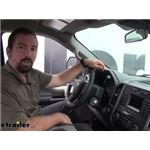
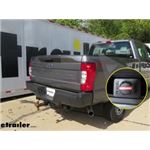
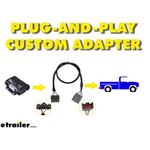

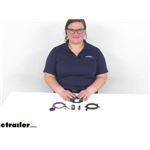




























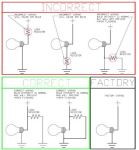
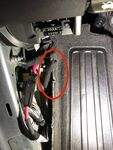

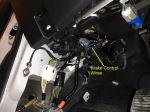
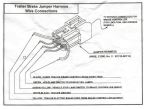



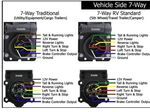

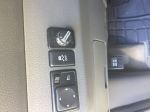

Thank you! Your comment has been submitted successfully. You should be able to view your question/comment here within a few days.
Error submitting comment. Please try again momentarily.